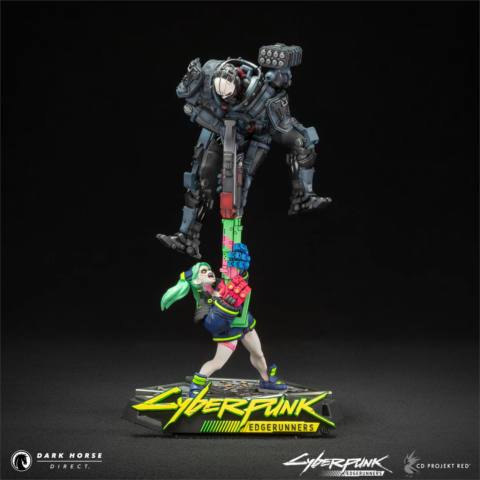If there’s one keyboard manufacturer I’ve often considered to be underrated, that honour would go to Taiwanese brand Ducky. It was one of the first brands I really took notice of when I got into mechanical keyboards as a wee nipper nearly ten years ago. Back then, it was making headlines for manufacturing a special ‘board with handmade ceramic plates to mark the Year of the Rooster in the Chinese Zodiac, or a limited edition keyboard with eleven different MX switch variants: the Ducky One 711.
Since those heady days when the mechanical keyboard fascination was more of a niche point, the brand has become a byword for longstanding enthusiasts like me for those who want a functional, reliable mechanical option that is built like a tank and feature-rich. The brand-new Ducky Zero 6108 is no exception.
The headline inclusion with the Zero 6108 is it signals Ducky’s move from using Cherry’s original run of MX switches to the brand’s new MX2A offerings. Jacob previously discussed this with his review of the lovely Cherry Xtrfy K5V2, but for those unaware, allow me to explain a little more.
MX2A is the German brand’s new version of their renowned MX switches which sought to fight back against the attack of the clone switches for several years by bringing in features such as factory lubrication, a ribbed stem for less key wobble, and diamond polishing for a super-smooth surface. Over the years, some had complained that MXs of all kinds were scratchy during initial use, so the lubrication and polishing should go a long way to change that.
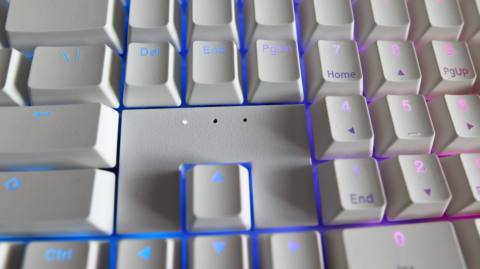
Switch type: Cherry MX2A Blue
Keycaps: PBT, double-shot
Lighting: RGB, dimmable on keyboard
Onboard storage: None
Extra ports: USB-C for charging
Connection type: Wireless – Bluetooth/2.4 GHz receiver
Cable: USB Type-C/USB Type-A, detachable
Weight: 1.2 kg/2.64 lbs
Price: $99/£96
With regards to Ducky, the Zero 6108 is offered with four MX2A switch types—Red, Brown, Speed Silver and Blue—a nice mix of snappy linear choices, a soft tactile and a heavier, audibly tactile switch. My sample came with MX2A Blues, which was a personal decision as I know that those specific switches haven’t experienced the same quantity of improvements as other switch models. To be specific, MX2A Blue has missed out on lubrication and the move to a barrel spring, yet they still feel like a significant improvement on the OG MX Blues I’m used to.
Right out of the box, the MX2A Blues were smooth and gorgeous to type on, while retaining their signature audible click and high degree of tactility. I used to use MX Blues everyday on an old G80-3000 I had plonked on my desk when I was a teenager, and the Zero 6108 took me back to using that, except it felt even more responsive.
Even if the MX2A Blues miss out on lubrication, they still feel immediately smoother and even more precise over extended periods. The one place where Blues have traditionally fallen down though is with their gaming performance, and after a few runs of Counter Strike 2, I did find myself yearning for something lighter, and linear.
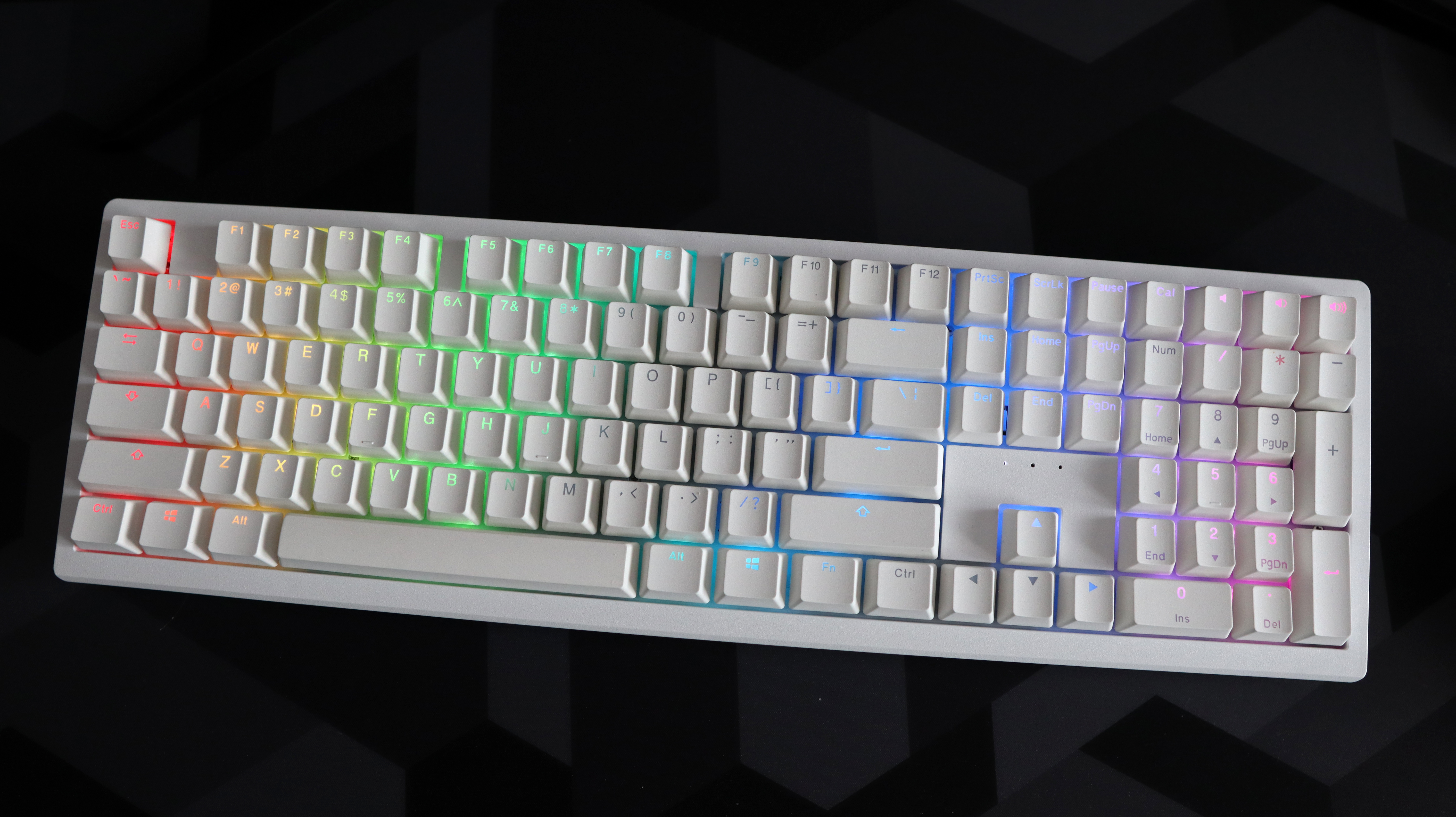
However, gaming workloads aren’t what Blues are about, they never have been. Instead, they’re a reliable tactile switch designed to be a workhorse for office work. When typing up thousands of words a week, including this very review, the MX2A Blues make for some of the best switches for typists with a crisp click halfway down the keypress and a robust level of tactility to boot.
The only thing to watch out for is the noise—while you or I may love it, others in your household or office may not. Acoustics are also solid too, with the combo of those switches and a generous helping of PU foam internally, there’s no unwanted rattle or ping here.
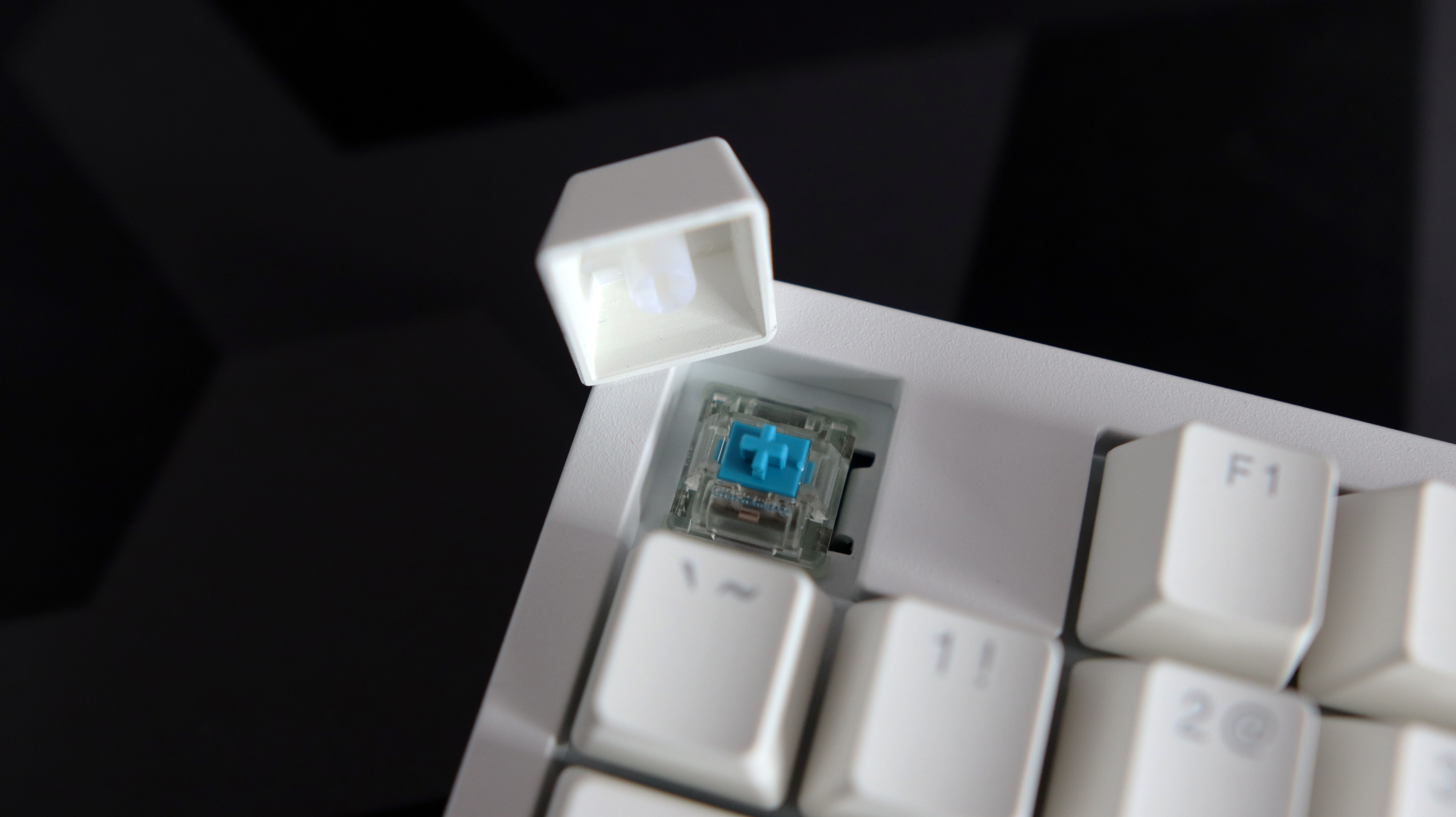
If those switches aren’t your jam, the Zero 6108 is hot-swappable, and provides vast compatibility with 5-pin switches. This means you can take any switch that conforms with five pins on the underside, and slot them into the keyboard without any need for desoldering the old ones, and soldering the new ones in. For my test, I had some spare Holy Panda switches from Drop, and they slotted in with no issue at all. It’s a handy extra that helps keep Ducky in the keyboard mainstream.
Connectivity is also fantastic, with the Zero 6108 working over three possible means: Bluetooth, 2.4 GHz and USB-C wired. Pairing the keyboard to either my main Windows gaming PC or my trusty MacBook Pro was a doddle over Bluetooth, and using it with its bundled receiver was as easy as plugging it in and turning the keyboard in. On the point of this ‘board working wirelessly, it features a 2500 mAh battery inside, which in my testing, allowed for the keyboard to last for a couple of days’ use before needing to be charged with RGB on. Ducky quotes the Zero 6109 to last for 18 hours with RGB enabled and when connected by Bluetooth, and 138 hours with lighting off. That’s not bad, although seems low from a 2500 mAh cell. A higher level of endurance would been useful.
The RGB lighting looks good too, with a bright colour and even coverage across the full-size layout on offer. However, where the Zero 6108 falls down is with its lack of control over said lighting with no software. There is a small amount of customisation possible with key shortcuts to do things such as change the pattern (Fn+F10), increase or decrease the brightness (Fn+Up or Down Arrow) and change the speed (Fn+ Left or Right Arrow). The lighting effects themselves aren’t too impressive, with various options for showing off colours, but little else.
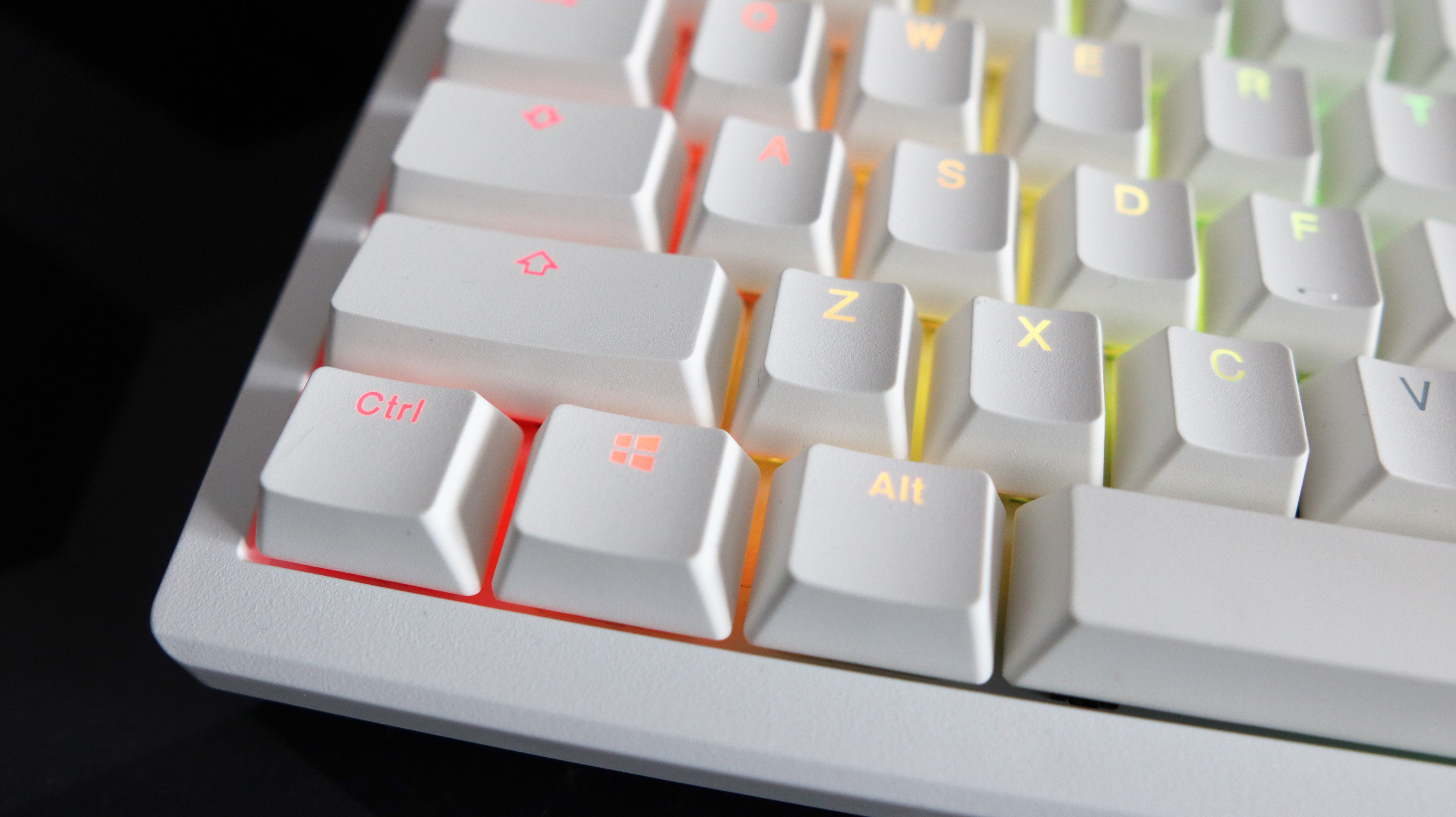
✅ You want a responsive, tactile typing experience: The MX2A Blue switches inside the Ducky Zero 6108 are some of my favourites, with a snappy, tactile keypress that’s wonderfully clicky.
❌ You want addressable RGB: The Zero 6108 falls down with its basic RGB effects that are entirely controlled from the keyboard, and there are only a handful to go through.
Elsewhere, the Zero 6108 offers a big full-size layout with all the keys you need, including a nav cluster, number pad, and an extensive function row. There are also shortcut keys for media control and opening the calculator in the top right corner.
The 1.2 kg plastic chassis offers some serious heft too, while there is no deck flex in the slightest, and the Zero 6108 also comes with thoughtful touches including integrated lock lights, a cable management channel on the underside, and solid two-stage adjustable feet for changing the typing angle.
The marvellous build quality here is also backed up by Ducky’s inclusion of textured PBT keycaps which are both hard-wearing with legends that form part of the keycap itself, as well as being slightly textured. This makes them rather comfortable to type on against smoother ABS choices.
And what does all this Ducky goodness run you? Well, it’s $99/£96, which seems like a bit of a steal. Okay, I know you’re sacrificing advanced RGB effects and software, but for the most part otherwise, it’s hard to find this much keyboard for the price. That doesn’t just go for how big this thing is as a full-size keyboard, but for one with vast swathes of wireless connectivity and some of the best switches in the business.
While there may be better choices slightly higher up the price ladder, you’ll be hard-pressed to find something as strong across the board as the Ducky Zero 6108 for $99/£96.

